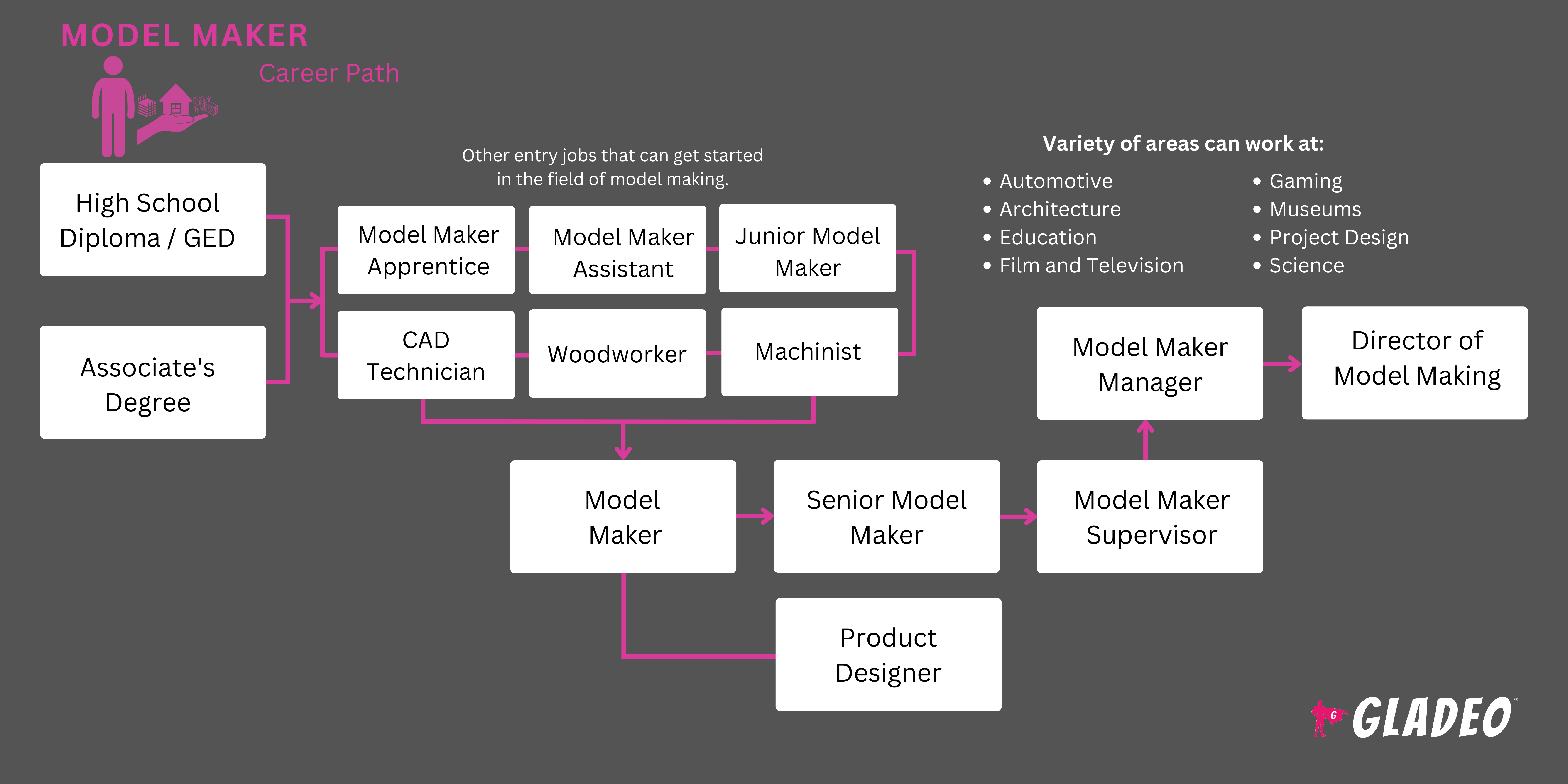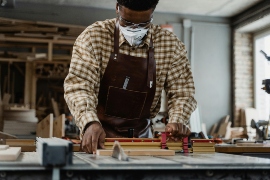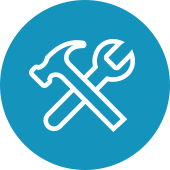Mga spotlight
Craftsman, Model Builder, Model Maker, Product Development Carpenter, Sample Builder, Sample Maker, Sample Worker, Scale Model Maker, Design Prototype Specialist, Prototype Fabricator
When we think of models, we might picture the small model cars or trains that hobbyists like to assemble. But models serve important functions in several industries such as architecture, automotive engineering, and industrial manufacturing!
In manufacturing, for instance, before a product is ready to be mass-produced and sent to stores, it’s got to be tested out. Part of that process is to build prototypes and mock-ups to demonstrate that the product’s design works in real life. The models are then rigorously checked for quality assurance and consumer friendliness before being approved for production.
These detailed product models are carefully crafted by Model Makers to give stakeholders and testers something they can see, touch, and try for themselves. The models are crucial for providing “proof of concept” – and for revealing any underlying problems that may require finetuning or redesign.
Working closely with designers and engineers, Model Makers ensure their finished models accurately represent the intended design and function within the requested parameters. They use hand tools and operate a wide array of machines to create precision parts out of materials like wood, plastics, and metals. They also incorporate other components, such as internal electronic devices, as needed.
Although it’s a relatively small career field, Model Makers are crucial players in the manufacturing industry. Without their hard work and diligence, we wouldn’t have half the products we use and rely on every day!
- Bringing ideas to life through physical models
- Contributing to product development and innovation
- Opportunities to work with advanced manufacturing technologies
- Collaborating with creative and technical professionals
Oras ng trabaho
- Model Makers typically work full-time in workshops, manufacturing facilities, or design studios. Their schedules may have to flex to accommodate deadlines and production cycles.
Mga Karaniwang Tungkulin
- Examine drawings, blueprints, and technical specifications for proposed models
- Collaborate with engineers and designers to adjust designs, as needed
- Use CAD and CAM software to modify design elements
- Determine dimensions for necessary materials to build models
- Determine the necessary equipment and plan out the sequence of operations
- Program CNC machines to fabricate model parts, or collaborate with CNC machinists or operators
- Ayusin ang mga bahagi ng makina tulad ng mga blades, holding fixtures, atbp.
- Determine which blank types to use to create a workpiece. Verify the tolerance of materials to be machined
- Operate machines such as lathes, saws, presses, etc. to create parts or molds
- Mark guidelines and reference points on materials. Use patterns or other references, as needed
- Use hand tools, files, grinders, sanders, hammers, dies, molds, jigs, and other tools, as needed to shape and smooth workpieces to the required dimensions
- Use power tools to insert holes in parts
- Align and join parts using bolts and screws, or via welding or gluing
- Insert mechanical, electrical, and electronic components into models, ensuring proper wiring and soldering
- Mga item sa screen para sa mga depekto. Gumawa ng mga pagsasaayos sa makinarya kung kinakailangan
- Gumamit ng mga instrumento sa pagsukat upang matukoy ang mga sukat ng mga huling gawa-gawang piraso. I-verify na ang mga nakumpletong produkto ay sumusunod sa mga kinakailangan
- Test prototypes for proper functioning
- Rework parts as necessary to ensure they meet standards
- Present models to stakeholders for feedback and approval
Karagdagang Pananagutan
- Keep track of all details such as materials used, final dimensions of parts, production processes, etc. to ensure standardization for future work
- Maintain and repair tools and equipment
- Magsuot ng kinakailangang personal na kagamitan sa proteksiyon at sundin ang mga itinatag na protocol sa kaligtasan
- Stay up-to-date on technical manuals and new technologies
- Panatilihin ang teknikal na dokumentasyon at mga spreadsheet ng data
- Train and supervise junior model makers and apprentices
- Participate in product development meetings
- Ensure compliance with safety and environmental regulations
Soft Skills
- Pagkaalerto
- Analitikal
- Pansin sa detalye
- Kakayahan sa pakikipag-usap
- Nakatuon sa pagsunod
- Pagkamalikhain
- Kritikal na pag-iisip
- Disiplina
- Independent
- Observation
- Organisasyon
- pasensya
- Pagpaplano
- Pagtugon sa suliranin
- Stamina
- Pagtutulungan ng magkakasama
- Pamamahala ng oras
Teknikal na kasanayan
- Computer-aided manufacturing software like Autodesk Fusion 360, SOLIDWORKS, Solid Edge, Siemens NX CAM, GibbsCAM, Mastercam, etc.
- Computer-aided design programs like Autodesk AutoCAD, CATIA, PTC Creo Parametric, and SolidCAM
- Computer numerical control (CNC) machining
- 3D printing programs
- Knowledge of various materials and their properties
- Hand tool proficiency
- Pagbabasa ng blueprint
- Basic electronics
- Welding and soldering
- Mga kumpanya sa paggawa
- Mga kumpanya ng disenyo
- Mga kumpanya ng arkitektura
- Film and entertainment studios
- Prototype development firms
- Institusyong pang-edukasyon
Model Makers are expected to produce highly accurate, detailed models within allotted timeframes. This requires expertise, precision, and often long hours to meet project deadlines.
The work can be physically demanding, requiring fine motor skills and attention to safety protocols. But the satisfaction of turning a concept into a tangible, functioning product can be very rewarding!
3D printing and CAD software have revolutionized model making, enabling more intricate models while reducing production time and costs. There’s also an industry shift towards replacing traditional materials with biodegradable or recyclable alternatives. In addition, companies are turning more to eco-friendly processes that reduce waste and energy consumption.
Another trend is the integration of augmented and virtual reality, allowing designers to project digital models into real-world environments or become immersed in a 3D space for real-time interaction. To some extent, these new technologies are actually reducing the need for physical model-making, but they’re also making it much easier to collaborate on projects remotely.
Model Makers are very hands-on people who might have enjoyed creating things from a young age. They likely spent hours on hobbies such as model building, woodworking, or crafting. Many grew up with a natural curiosity about how things are made!
- The educational requirements to become a Model Maker aren’t set in stone
- Some get started with a bit of vocational training or a certificate. Others may pursue an associate degree or even a bachelor’s degree in industrial design, manufacturing technology, or a related field
- Ang mga karaniwang paksa ng kurso ay kinabibilangan ng:
- 3D printing
- Pagbabasa ng blueprint
- CAM programming at G-code
- CNC machining
- Computer-aided na disenyo
- Dimensional metrology
- Manufacturing processes
- Material science
- Math (calculus, trigonometry, linear algebra, geometry, statistics)
- Mechanical drafting
- Paggiling ng mga application at programming
- Prototyping techniques
- Kaligtasan sa tindahan
- Welding at metal joining
- Many Model Makers learn through practical experience via internships, apprenticeships, or related jobs
- Students can learn a lot from online courses such as Autodesk’s 19-hour Intro to CAD, CAM, and Practical CNC Machining offered via Coursera. There’s also a four-month Autodesk CAD/CAM for Manufacturing Specialization which includes a hands-on project!
- Familiarity with augmented reality (AR) and virtual reality (VR) tools can enhance a Model Maker’s capabilities and career prospects
- Model Makers don’t usually need a four-year degree but often take classes related to CAD, CNC machining, industrial design, manufacturing technology, or related fields.
- Look for programs with well-equipped, modernized workshops where you can get practical hands-on experience and learn about the latest technologies.
- Programs should have seasoned faculty members and, ideally, opportunities for internships or cooperative learning with local employers.
- Consider the cost of tuition, discounts, and local scholarship opportunities (in addition to federal aid).
- Think about your schedule and flexibility when deciding whether to enroll in an on-campus, online, or hybrid program. Some courses may be better done in person to get hands-on experience.
- Also consider programs that can train you on using AR and VR tools in relation to model making!
- Sign up for plenty of math (arithmetic, algebra, geometry, and trigonometry), physics, computer science, materials science, design, art, and shop classes in high school
- Isaalang-alang ang pag-aaral ng mekanikal na pagguhit at pagbabasa ng blueprint
- Enroll in a community college or vocational/technical school program to learn about CAD, CAM, CNC machining, 3D printing, welding, virtual reality, and other related topics
- You can also take online courses from Coursera, Udemy, edX, Pluralsight, LinkedIn Learning, etc.
- Makakuha ng real-world na karanasan sa pamamagitan ng mga part-time na trabaho na may kaugnayan sa machining o shop work
- Simulan ang paggawa ng iyong resume at idagdag ito habang natututo ka at nakakakuha ng karanasan sa trabaho
- Suriin ang mga pag-post ng trabaho nang maaga upang makita kung ano ang mga karaniwang kinakailangan
- Request to do an informational interview with a working Model Maker
- Gumawa ng listahan ng iyong mga contact (kabilang ang mga email address o numero ng telepono) na maaaring magsilbing mga sanggunian sa trabaho sa hinaharap
- Study books, online articles, and video tutorials related to model-making
- Join online forums to ask questions and learn from experienced professionals
- Engage with clubs and groups to learn, share, make friends, and grow your network
- Build a portfolio of projects to showcase your skills

- Check out job portals such as Indeed, Simply Hired, Glassdoor, and Craigslist
- Kumuha ng mas maraming praktikal na karanasan sa trabaho sa tindahan sa ilalim ng iyong sinturon hangga't maaari bago mag-apply
- Consider enlisting in the military in a machinist career field. You’ll get free paid training and can earn job experience that can be used in a civilian career, too
- Seek out apprenticeships sponsored by employers, unions, or trade associations
- Ask a working Model Maker for job-seeking tips
- Pag-isipang kumuha ng sertipiko o associate's degree. Ang mga kredensyal sa akademiko ay maaaring makatulong sa iyo na tumayo laban sa kumpetisyon
- Humingi ng tulong sa career center ng iyong paaralan sa pagkonekta sa mga recruiter at job fair
- Magtanong nang maaga sa mga potensyal na sanggunian upang makita kung irerekomenda ka nila o magsulat ng mga liham ng sanggunian
- Check out online Model Maker resume templates and review potential job interview questions
- Before going into an interview, brush up on the latest news about the field. Be ready to discuss your insights about relevant trends and changes
- Pag-aralan ang mga gabay ng tagagawa at software. Maging eksperto sa mga programa at machine na iyong ginagamit
- Ask your supervisor how you can improve your CAD, CAM, and CNC machine knowledge and skills to better serve the company
- Knock out specialized certifications related to cutting-edge technologies like AR and VR
- Demonstrate that you can work independently and collaborate effectively on teams
- Train new workers patiently and thoroughly. Make sure to always wear appropriate personal protective equipment to avoid mishaps and hazards
- Write “how-to” articles to establish yourself as an industry leader
- Branch out into different types of model-making to expand your horizons
- Consider relocating if needed to advance your career!
Mga website
- 3Ds Max
- American Institute of Architects
- American Mould Builders Association
- Asosasyon para sa Teknolohiya sa Paggawa
- Association of Energy Engineers
- Association of Professional Model Makers
- AutoCAD
- Autodesk Fusion 360
- Autodesk Imbentor
- Blender
- CATIA
- Fabricators and Manufacturers Association
- G2.com
- GrabCAD
- IMAGINEiT
- Industrial Designers Society of America
- International Association of Machinists at Aerospace Workers
- International Council for Machinery Lubrication
- International Fluid Power Society
- International Union, United Automobile, Aerospace at Agricultural Implement Workers of America
- Make:
- Manufacturing.gov
- Institusyon ng Paggawa
- National Institute for Metalworking Skills
- National Tooling and Machining Association
- NX – Unigraphics
- Precision Machined Products Association
- Precision Metalforming Association
- Revit
- Shapeways
- SketchUp
- Lipunan ng mga Inhinyero sa Paggawa
- Solid Edge
- SOLIDWORKS
- TCT Magazine
- TITANS of CNC Machining
- United Steelworkers
- Unity 3D
Mga libro
- Making Things Move DIY Mechanisms for Inventors, Hobbyists, and Artists, by Dustyn Roberts
- Prototyping: A Practitioner’s Guide, by Todd Zaki Warfel
- Rapid Prototyping: Principles and Applications, by Chua Chee Kai and Leong Kah Fai
Model Makers are key players in the manufacturing industry. But the career field is relatively small, and may not be suitable for everyone, so check out our list of related occupations below for additional career ideas!
- Architectural Drafter
- CAD Technician
- CNC Programmer
- Electrical at Electronic Equipment Assembler
- Engine Assembler
- Industrial Designer
- Industrial Machinery Mechanic
- Machinist
- Manufacturing Engineer
- Mechanical Engineer
- Patternmaker
- Product Designer
- Prototype Technician
- Set at Exhibit Designer
- Structural Metal Fabricator
- Tool at Die Maker
Newsfeed

Mga Tampok na Trabaho

Mga Online na Kurso at Tool








